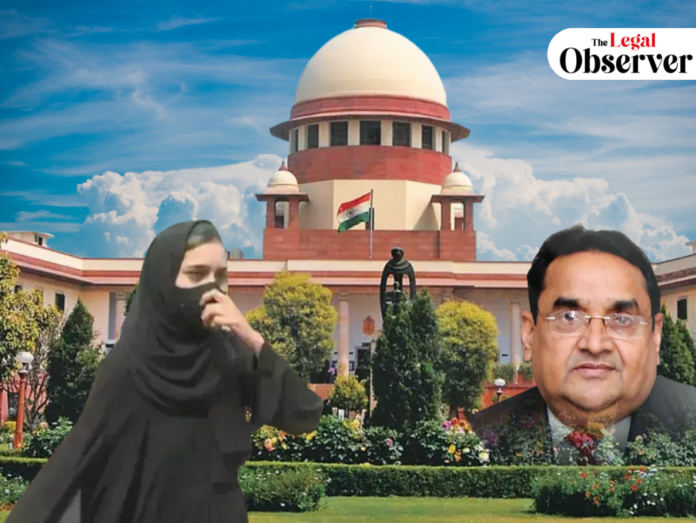The hijab case is a controversial matter which was heard by the two judges’ bench where one bench was in favour of the decision of the Karnataka High Court and the other opposed the decision. Now the larger bench of the Supreme Court will hear the matter.
Justice A N Mittal, a retired judge of High Court and a former chairman of Uttar Pradesh Law Commission has been throwing lights on the matter of Hijab Case.
The most important provisions dealt in this case is Article 14 and 19 of the Indian Constitution are Right to Equality and Right to freedom of speech and expression which are fundamental rights for the citizens of India and are subject to reasonable restrictions.
The importance of dealing with this provision and other provisions like Article 25 and 19(1) (a) and (b) is focused because this matter is wholly related to religious practice and freedom of speech and expression.
Justice A N Mittal told us the views of the two-judge bench of Justices Hemant Gupta and Sudhanshu Dhulia of the Supreme Court of India delivered a split verdict on the Karnataka hijab case.
Justice Sudhanshu Dhulia’s main focus is the education of girls which in any case do not get hampered and wearing Hijab is not attached with the religious practices.
As Justice A N Mittal said that the issue is not that Hijab is essential religious practice for Islam or not but the actual issue is that the girls are allow to wear hijab in the educational institute where there is already a prescibed dress format.
Right to wear a hijab is a religious practice or not. Article 19 doesn’t give a fundamental right to any person as a freedom of speech and expression to express their irrelevant speech or words.
Article 25, Freedom of conscience and free profession, practice and propagation of religion challenged under the Hijab Case.
The Right to Protection of Life and personal liberty is the main object of Article 21 and it is a right guaranteed against State Action as distinguished from violation of such right by private individuals but it is also said that no fundamental right is absolute.
Even in this case the Court has also stated the question of if there is a prescribed dress so the institute will accept the same color scarf or not. Even a dress prescribed in the educational institution is a part of unreasonable restriction or not. All these issues are focused in the court in the controversial Hijab Case.
All these issues are against the law and Justice Hemant Gupta in his decision rejected the appeal. On the contrary Justice Sudhanshu Dhulia has supported his issue by focusing on the education of girls which is necessary.
Justice A N Mittal also stated that as every area has their own prescribed dress which need to be followed like in court a lawyer should wear a proper prescribe dress, white shirt, black pant and band to wear and then perform their duties in a similar manner there is dress code in educational institute to show a equality among themselves.
The most important thing is to follow discipline. Justice A N Mittal shared his experiences of Aligarh Muslim University of convocation ceremony when he used to study that there was a dress code which was to be followed by the students that consist of grooms traditional attire for both boys with caps on head which was compulsory this shows that no one can object this dress by pointing it on the basis of religion or any other matter and this also shows a discipline which was followed by the people.
The decision by the Karnataka High Court in Hijab Case is not made to hurt the sentiments of any religion or community. The custom of wearing the Hijab in educational institutes was not followed from the starting so it is not to be taken as a violation or hurting of any sentiments or targeting any religion. If there is one rule for every student then it should be followed by everyone and it is a part of discipline.
He concluded his speech by stating that the dress code in educational institutions is made to show the equality among the students and with his dress code the intention of discretion among religion will not come to their mind. The students in schools are from different backgrounds like some are from rich and some are from poor families, to minimize the discrimination on the basis of backgrounds.
Dress code is not considered under religious practice. And the dress code is considered a part of discipline and we all are bound with this discipline.






